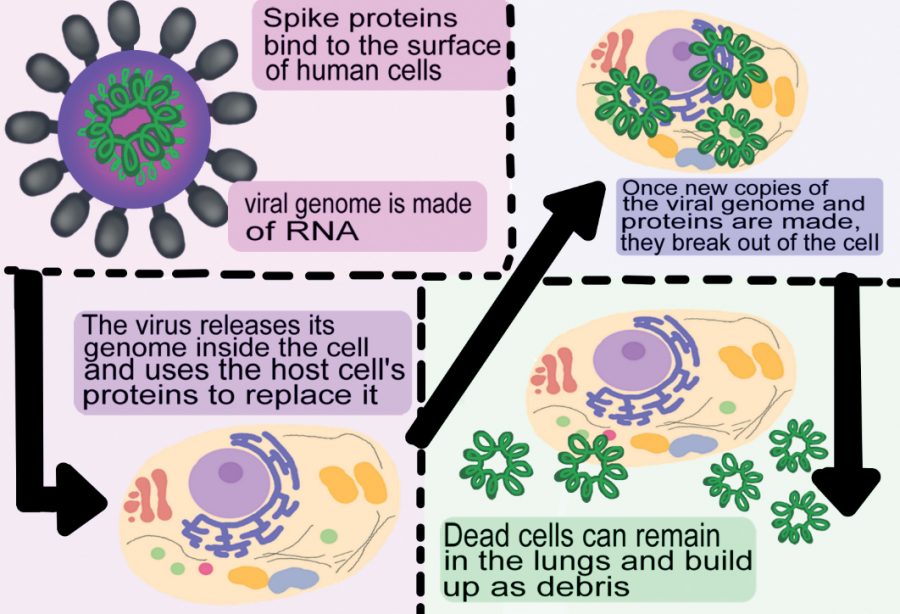Viral movement: Coronavirus spreads through infected droplets
Coronavirus includes a class of viruses like SARS, but has possibly more adaptable RNA
As the World Health Organization declares a “pandemic,” some researchers offer advice and explanation into how the COVID-19 strain works, and why washing your hands is worth the time.
March 12, 2020
The World Health Organization upgraded the severity of the current COVID-19 outbreak to a pandemic on Wednesday.
As the illness continues to spread, officials say frequent hand washing with soap and water is the best way to stay healthy.
Alan Goodman, assistant professor in the WSU School of Molecular Biosciences, said the outside of the virus is made of lipids, which are fatty acids that soap can remove.
“It’s the same reason you can wash oils off your hands,” Goodman said. “The properties of the soap [break down] those lipids, fats and oils on your hands and [the soap] can destroy the membrane of the virus.”
Coronaviruses are a class of viruses that include SARS, MERS and the current COVID-19. Coronaviruses have protruding spike proteins on their membranes that can bind to the surfaces of human cells, said Michael Letko, a postdoctoral researcher at Rocky Mountain Laboratories who researches coronaviruses. Letko will be moving to WSU in July to continue his research.
Once it binds to a human cell, the virus injects its genetic code, called RNA, into the cell.
Human DNA has machinery that allows proofreading, which checks for mistakes in genetic codes. In RNA, this machinery is an enzyme called RNA polymerase and cannot proofread the newly made genetic code, Goodman said. This means there is a greater chance of there being mutations in the genetic code of coronaviruses.
“That can translate out to viruses that adapt quicker to hosts and viruses that spread more efficiently,” Letko said.
RNA viruses are not necessarily more infectious than DNA viruses, Letko said. However, the mutations in their genetic material can make them more adaptable.
The viral RNA, once inside the cell, uses proteins inside the cell to replicate itself and make more viruses.
“It starts recruiting factors that it needs, while at the same time blocking factors that could interfere,” Letko said.
Once copies are made, the viral copies break out of the cell, destroying it in the process. This is called lysing.
Dead cells and the fluid inside them can accumulate in the lungs, Goodman said. This can lead to a cough and potentially pneumonia.
COVID-19 spreads in aerosolized droplets, Goodman said. When these droplets come in contact with mucous membranes, which are present in eyes, mouth and nose, the virus can attack the lower respiratory tract.
Infected people are capable of spreading the virus within six feet, so it is important to maintain social distancing, especially for those who are sick.










